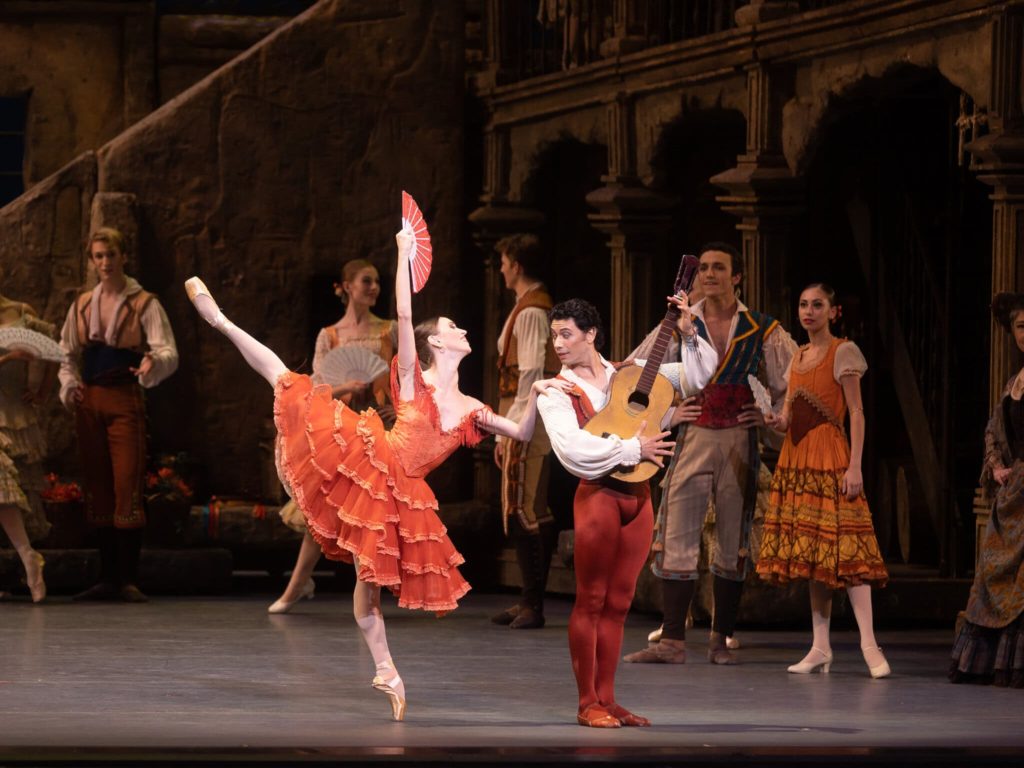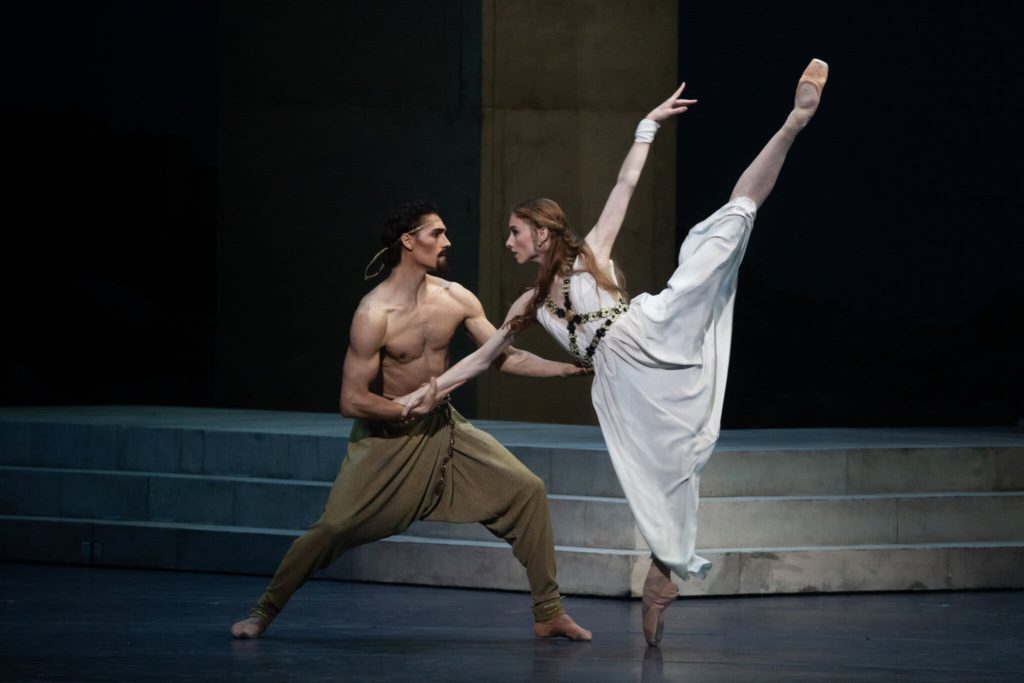VIEWPOINTS – American Ballet Theatre’s summer season returns to the Met after three long years, commencing with a sturdy warhorse and a new swashbuckling romance
- By drediman
- June 23, 2022
- No Comments
Last week at the Metropolitan Opera House, American Ballet Theatre commenced its summer season – its first in three very long years since Covid took to the headlines. So far, the season (which focuses primarily on presenting full length classical ballets) has given us a sturdy, family-friendly warhorse and the New York premiere of a swashbuckling romance. As usual, here are my thoughts.

DON QUIXOTE
Closed
Ballet Theatre’s summer season began conservatively with a revival of Kevin McKenzie and Susan Jones’s handsome production of the crowd-pleasing warhorse Don Quixote (RECOMMENDED). While some would have preferred a more “substantial” season opener, I actually didn’t mind the choice. The ballet’s sunny and celebratory disposition seemed the perfect tone for the company to set as it welcomed audiences back to the Met after the long hiatus. At the performance I attended, the leading roles of Kitri and Basilio were danced by principals Skylar Brandt and Herman Cornejo, an ideal match in terms of size and capability. In recent years, Ms. Brandt has developed into a prima ballerina of note. As Kitri, she infectiously showed off her playful personality, as well as her exquisite technique, floating effortlessly across the stage with a lightness and power that belies her petite frame. Mr. Cornejo is arguably the company’s biggest star, and he didn’t disappoint, dancing at a comfort level and with the kind of bravado that continues to dazzle. Less successful in the secondary roles of Espada and Mercedes were Gabe Stone Shayer and Cassandra Trenary – he seemed to ham it up to minimum impact, while she lacked the fire you’d expect from a seductive gypsy woman. As Kitri’s friends, the young up-and-comers Breanne Granlund and Betsy McBride danced with freshness and promise; I look forward to seeing them develop in the years to come.

OF LOVE AND RAGE
Through June 25
For more serious dance fans, perhaps the main draw of Ballet Theatre’s summer season is the New York premiere of Of Love and Rage (RECOMMENDED), Alexei Ratmansky’s new evening-length story ballet set in ancient Greece and Babylon. The swashbuckling two-act work is the choreographic retelling of Callirhoe – considered by literary historians as one of the oldest novels ever written – a tumultuous love story beset by jealousy, war, and enslavement. The production represents a big gamble for the company, which has invested quite a bit of its resources to mount the ballet (Jean-Marc Puissant’s monumental sets alone must have cost a pretty penny). On opening night this past Monday, the central lovers Callirhoe and Chaereas were performed by Catherine Hurlin and Aran Bell, who also danced the parts in the piece’s world premiere at the Segerstrom Center in California in March of 2020 (just before the pandemic emphatically shut down all in-person performances). Ms. Hurlin in particular was a revelation, dancing with ravishing beauty and an alluring but impenetrable poker face as Callirhoe encounters challenge after challenge. Counterbalancing Ms. Hurlin’s elevated coolness was Mr. Bell, who was all youthful gusto and brio. There’s a lot of plot in the ballet, which affords the company a number of juicy roles for dancers to sink their teeth into. Coming off most effectively as Callirhoe’s second husband Dionysius was Daniel Camargo, who danced with an intensity that smoldered. Is the ballet perfect? By all means no. The narrative is overly eventful and convoluted, and Ratmansky intermittently abandons the plot in pursuit of his own aesthetic goals (I highly suggest you read the synopsis beforehand). Nevertheless, I admired the choreographer’s commitment to minimizing mime and his preference to use dance as the primary means of storytelling. Despite some narrative glitches (e.g., there’s a missing scene in Act I that seems egregiously omitted from a storytelling perspective), Ratmansky’s sweeping work breathes with the characters, allowing their stories to resonate with genuine emotion and humanity. The overall result is a refreshing departure from the Petipa mold and a boldly evocative and surprisingly sensitive rendition of a tale that’s chock full Of Love and Rage.

 Copyright © 2025
Copyright © 2025
Leave a Reply